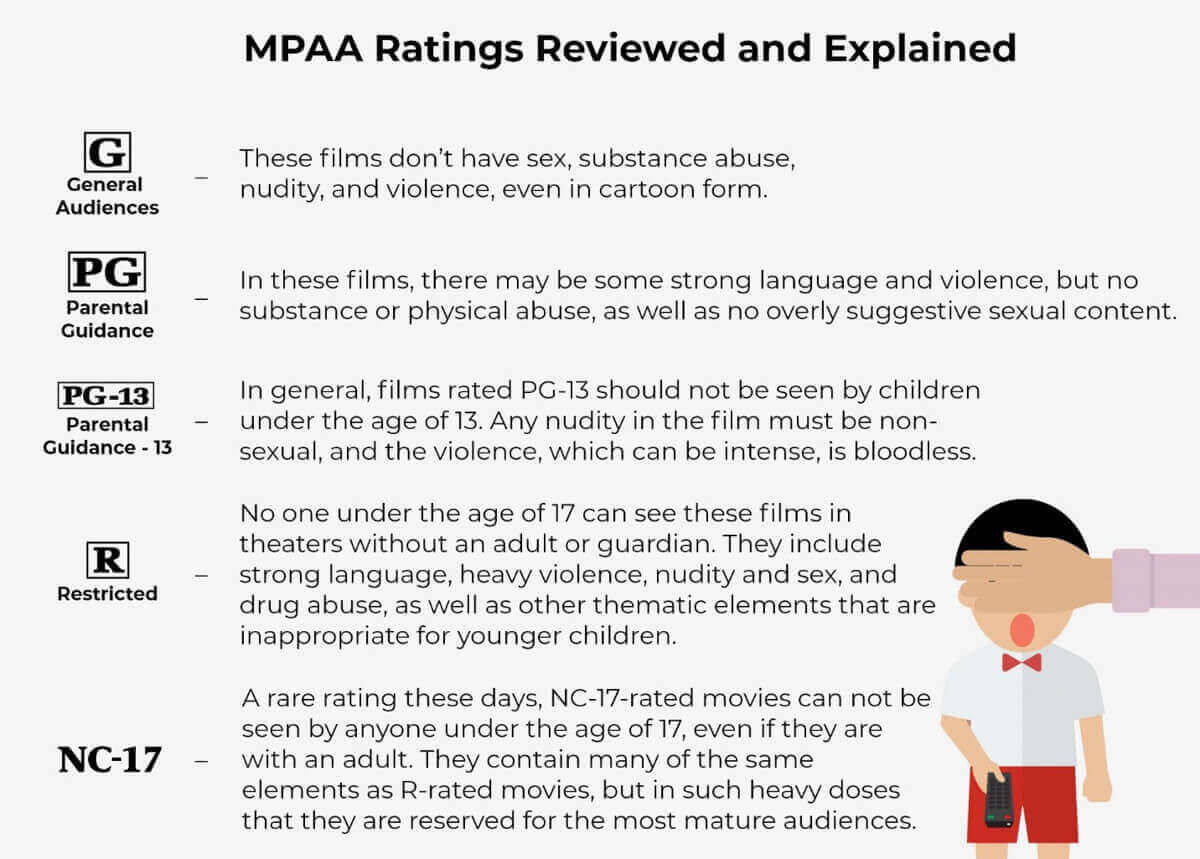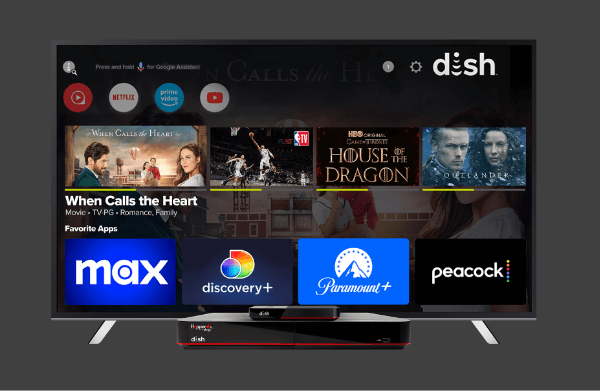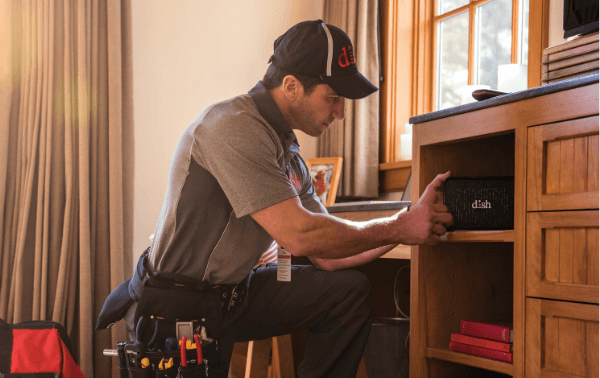How to Keep Your Children Safe When Watching TV

Table of Contents
Parenting has always been about striking a balance between protecting children and giving them the freedom to explore the world, find themselves, and establish their independence. While this has never been an easy task, it seems like a much harder one today, with children exposed to so much more much earlier than kids of previous generations.
Of course, the internet is often the medium we think of when discussing some of the newfound dangers to children in the modern era, but we mustn’t forget television. TV has been around for decades and is now an integral part of life. But with more channels than ever, as well as countless streaming and on-demand services, there are more ways for children to be exposed to the potentially harmful aspects of television.
As a result, to do our jobs as parents, we need to be more vigilant about the dangers out there and take more steps to keep our kids safe. Below, we’ve outlined some of the main risks involved in watching TV in the modern age, as well as some strategies to help you help your kids as they navigate the information-soaked, media-heavy time in which we now live.
The Dangers Kids Face
To effectively protect your kids while watching TV, it’s essential to fully understand the risks they face when they’re sitting on the couch being entertained. Here are some of the key challenges:

Exposure to Violence
One of the first things you will notice if you stop and think for a moment about how television has changed is that the programming we watch today is considerably more violent. In the old days, a few theatrical punches would bring the villain down. Today, it seems like fight scenes go on forever, and it’s not uncommon for blood, gunfire, explosions, and other violent imagery to appear even on network television. And when you get into the streaming services, things can get really violent.
For years, those in favor of censorship argued that such exposure to violence would make your children become more violent, but it turns out there isn’t much scientific evidence to back up this claim. Instead, exposure to violent media fosters aggression and violence only when there are other factors at play.
However, even knowing this, parents should not take violence lightly. Too much of it can traumatize children, leave them frightened, and desensitize them to it, impacting their behavior and development. As a result, it’s important to take this seriously and to have a plan in place to protect your children.
Excessively Sexual Content
Next to violence, sexual content is also one of the biggest dangers your kids face while watching TV. Unlike exposure to violence, which doesn’t directly lead to violent behavior, consuming too much content with heavy sexual images can have a serious impact on your child.
This is because viewing such media produces a dopamine release in your brain, and over time, this can lead to desensitization and even addiction, though both are not excessively likely. Perhaps even more concerning is that too much of this type of content can greatly influence how your children think about and understand sex, impacting them significantly throughout their lives.
In many ways, it’s good for children to have some exposure to sex as they grow, and it’s beyond natural for them to be curious. Still, with so much of it out there to watch on TV, it’s important parents are aware of what’s going on and take the appropriate steps to mitigate any issues.
News Without Context
Although many areas of television are struggling as competition from streaming services heats up, cable news is still doing quite well, and if your kids are surfing channels, they will likely come across one of these networks.
In general, it’s a good thing for kids to be curious about the world, and them being interested enough to tune into a news broadcast should be seen as something positive. However, today’s news is…complicated. Most networks have a heavy bias – either to the left or to the right – and because they are on 24 hours a day, what stands for news these days can be questionable, to say the least.
Suppose your children happen onto a channel with a bias, or that is covering a particularly sensational news story, and they lack the context needed to understand it. In that case, this can have a pretty significant impact on their developing worldview. Again, the approach here isn’t to dampen your child’s curiosity but rather to be aware that television might not be the best or only place for them to pursue it.
Aggressive Advertising
Advertising and TV go together like vanilla ice cream and apple pie. For many years, television was “free" to consumers mainly because of advertising, yet even as more and more people pay for television, ads haven’t gone anywhere. In fact, there seem to be more of them, with countless studies finding that the average American is exposed to thousands of ads each day across the various media platforms we use – TV, social media, radio, billboards, etc.
This is a lot to handle even for a developed adult mind, which is why we live in an age with such rampant consumerism; even rational adults can be swayed into buying things they don’t need.
Overexposure to advertising can also lead to unhealthy ideas about success, health, body image, and much more. An ad’s primary objective is to convince you that the item being sold is a real necessity that can solve a real-life problem you are facing, even when this is rarely the case.
However, for children, the impact of advertising can be even deeper, and advertisers have made no secret that targeting children is a significant component of their strategy. After all, today’s children are tomorrow’s coveted 18-34 market segment.
Avoiding ads is impossible, but it’s vital to properly arm children with the wherewithal to understand ads so that they will not overly influence how they see themselves and the world.
Scams
Lastly, watching lots of television can expose children to scams. These days, such sinister appeals are pretty well-regulated, but there are still many products being sold out there that aren’t legitimate or that aren’t very high-quality. Kids can be susceptible to such tactics. Of course, they are somewhat self-protected because they don’t have money, but if they do have access to a credit card or some other payment method, they could get in trouble if they’re watching too much TV. Therefore, it’s essential to educate your children on how to spot such scams so that they can stay safe while watching TV.
How to Keep Your Children Safe When Watching TV
There are more TV-watching-related risks we could focus on, but these five are the most significant, and they should be your primary concerns when developing a strategy for keeping your family safe.

Speaking of this strategy, below, we’ve outlined nine different things we think can help protect kids from the potential dangers of watching TV. Implementing all of them is unnecessary, but some combination of these tactics should help prevent your children from getting into trouble.
Start With a Conversation
As with most things in parenting, one of the best things you can do to keep your kids safe when watching television is to ensure you have an open dialogue with them about the topic. As they get older and begin to reach for their independence, talk to them about what they are watching, why they are watching it, and how they feel about it.
If they want to watch something that you consider to be not age-appropriate, then make sure to find out why. They may have a genuine curiosity about a social issue that you can help them learn about in a healthier, safer way. But they may only be interested in it because their friends have already seen it, which does not automatically mean it’s a good idea for your child to see the program in question.
Most importantly, though, this conversation needs to be ongoing. If you leave your kids home alone and you know they’ve been watching TV, ask them what they watched and discuss with them their motivations and feelings.
Conversations are also crucial for contextualizing things. For example, if kids see something on the news, it could be beneficial for you to explain more of the issue so they can better understand what it is.
Additionally, if they happen to watch something that’s too violent, sexual, or otherwise, talking about it can help them cope with what they saw and be less traumatized/affected.
Of course, talking to children, especially teenagers, can at times be easier said than done. But if you show a genuine curiosity for their interests and desires, and a willingness to listen, you’ll likely find that they will open up more easily, which will lead to healthy, fruitful discussions that will help them stay safe.
Heed Ratings
Nearly all of us are familiar with the ratings system used for television and movies. While we can agree there is some subjectivity to these ratings, they were established for a reason and can be a useful tool for helping you determine which content is and isn’t appropriate for your children to see. For those who need a reminder, here are the different ratings established by the Motion Picture Alliance of America (MPAA), along with a brief description of each:

For television, a similar ratings system exists, but the labels are slightly different. TV-G and TV-PG are the same. Then there is TV-14 instead of PG-13, and TV-MA instead of R. These are used by cable networks, broadcast television, and streaming services, so it’s important to be familiar with them.
To be clear, these ratings can be subjective, and there may be a time when it makes sense for your 15-year-old to see an R-rated movie. However, understanding these ratings can help tip you off to what’s involved in a particular show, which can help you make more informed decisions about what your kids should and shouldn’t watch.
The ratings system can also be used to set up a boundary system. For example, you might set up the rule that R-rated movies are off-limits. This way, when your kids asks to watch something, all you need to say is, “what’s it rated?" This will help avoid arguments and protect your kids.
Keep Screens in a Public Place
One straightforward way to protect your children from the dangers that lurk while watching TV is to make sure they are doing so in a public place. Kids are far more likely to wander over to inappropriate channels or put on content they shouldn’t be watching when they think they are alone.
So, no matter how much they beg, don’t put a television in your child’s room. Doing so is a bad idea even without all the inappropriate content – kids with TVs in their room often stay up too late and develop bad sleep patterns – so avoid issues down the road and keep TVs in living rooms, dens, studies, etc.
Use Shared Accounts
You can also make sure your kids are using streaming accounts you have access to. We all know that these platforms keep track of what you watch, and knowing that a parent will see what they’ve watched can keep your child from putting something on they know they shouldn’t be watching.
Not letting them have their own account can create conflict, though. So one thing to consider is making it a reward. After they’ve proven they can be trusted to only watch content appropriate for them; they can have the freedom that comes with their own account.
Encourage Using Recordings and Streaming Services
Recording shows from live TV to watch later and relying on streaming services can be good for a few reasons. First, it allows you to skip advertisements, but they also allow you to pause and fast forward, which would let you skip over excessively violent or sexual content. Sometimes, a movie gets an R-rating just for one scene, and the film still has value without it. So, you can watch it but just skip that scene to keep your kids from being overexposed.
In addition, watching pre-recorded content allows you to pause the show or movie to talk about or explain what’s happening. This can be helpful for children as they digest what they’re seeing, and it is also an excellent chance for you to gauge how well they are handling whatever is on TV.
Watch TV With Your Children
This might not be an incredibly popular strategy – especially amongst teenagers – but watching TV with your children is a great way to prevent them from being exposed to something inappropriate. And, even better, it’s a chance to explain and provide context when needed. Of course, you don’t need to do this all the time – it may only make sense when your kids get older and start showing interest in more adult content. However, it’s a good thing to do at least once in a while so that you have a better idea of what it is your children are watching when they have the freedom and power to view what they want.
Watch Content Before They Do
Another good thing to do if you want to provide your children with more freedom is to simply watch whatever they’re watching before they do. Perhaps there’s a movie or television show that’s become popular at school that you’re unsure about. Instead of outright allowing or denying them, take the time to watch it for yourself and make a decision based on what you see. This way, if you deem it inappropriate, you will be able to say more specifically why you’re forbidding them from watching.
Or, if you decide to let them watch it, you’ll know what some of the more intense scenes are and can be prepared to have a discussion both before and after that provides context and makes the content less harmful.
Use Parental Controls
If you’re struggling to have an open dialogue, or have failed to get your child to adhere to the guidelines and boundaries you’ve set up, then it could be time to resort to parental controls. This will literally block your children from viewing specific content without a password or code. It can be incredibly frustrating for children, but when their safety and well-being are at stake, you need to be sure they know that you’re serious, and parental controls are one way to do this.
Nearly all cable, live streaming, and video-on-demand services have parental controls, which you can access in your administrator account settings.
Limit Overall Screen Time
Lastly, you might want to group television watching with other device use and limit their overall screen time. The science is still undecided, but most of us can agree; it’s not good for a child to be looking at a screen all day. Limiting the amount of time they can do so will help them make better, smarter decisions while also decreasing the amount of time they’re exposed to the harmful content out there, keeping them much safer in the process.
Conclusion
Television and movies can be wonderful forms of entertainment. Things are better than ever before, between the advances made in special effects and the ever-expanding creativity of writers and directors. But as producers and studios strive to create new content, they often have to explore more challenging issues, exposing children to things they’re not ready to see.
Thankfully, though, you’re not defenseless. Take the time to educate yourself and implement some of the measures we’ve discussed here. You and your children should be able to enjoy all the television you want without having to worry about its sometimes harmful effects.






 Call
Call 

 Access Your Account
Access Your Account